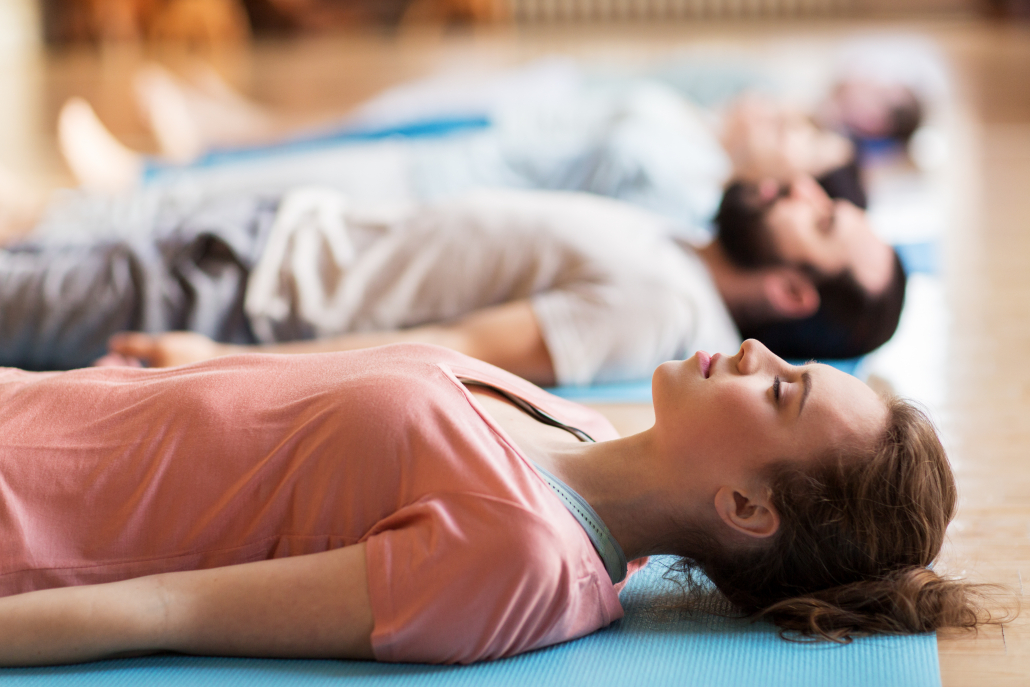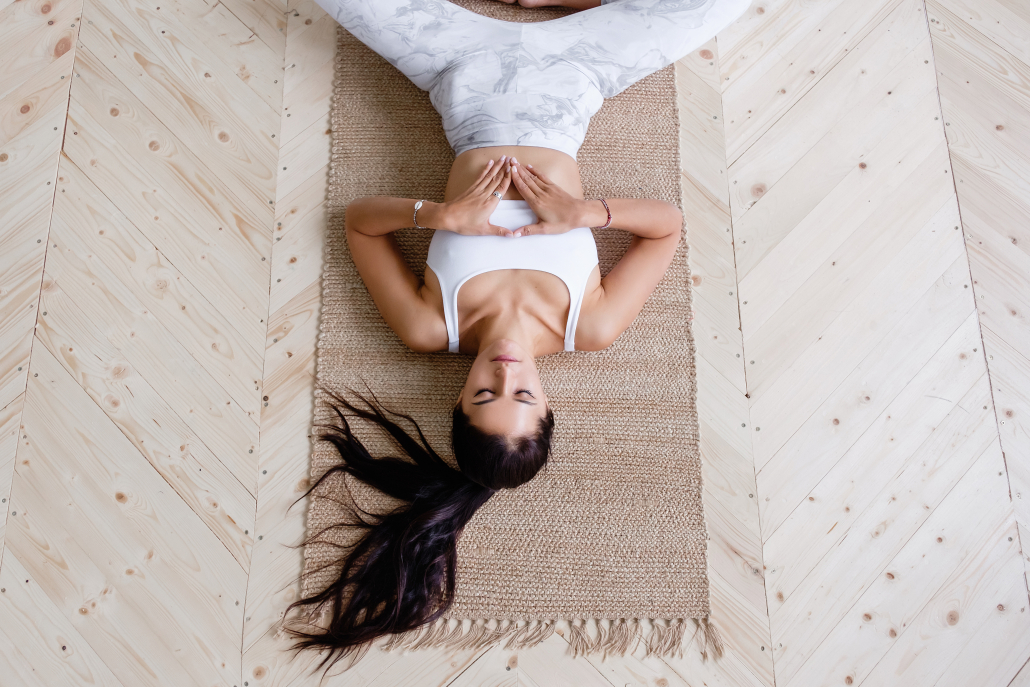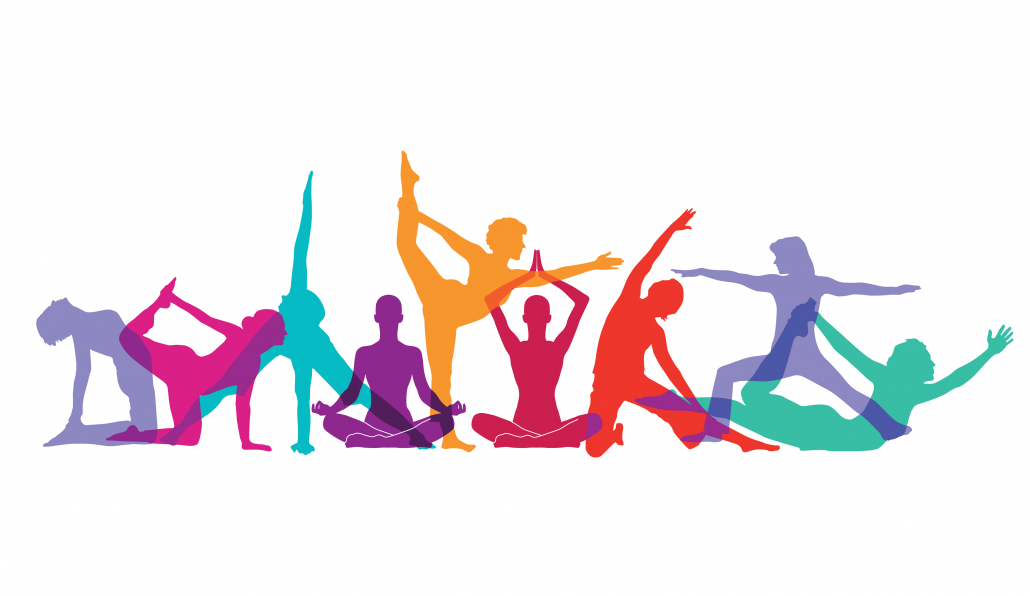We include products in articles we think are useful for our readers. If you buy products or services through links on our website, we may earn a small commission.
Yoga Nidra 101: Full Body Relaxation, Benefits, and Tips

Table of Contents
Stress and anxiety are issues that most of us deal with everyday on some level. Globally, about 284 million people experienced an anxiety disorder in 2017, making it the most prevalent mental health issue worldwide.
While we don’t always have control over what happens in our lives, we can develop control over our responses. Controlling our responses to stressors goes a long way towards reducing how much stress and anxiety we feel. This is where yoga nidra comes into play.
What is Yoga Nidra?
Yoga nidra (also known as “yogic sleep”) is a state of consciousness between wakefulness and sleeping that allows you to reach a deeper and less reactive state of consciousness.
In yoga nidra, sleeping is not seen as a form of relaxation, nor is sitting in a comfy chair to wind down. Though relaxing, simply winding down and sleeping actually allow the mind to get distracted. The point of yoga nidra is to maintain awareness while you relax so that you can access deeper levels of your subconscious.
Where did Yoga Nidra Originate?
Yoga nidra is derived from two Sanskrit words; “Yoga” meaning union, and “Nidra” meaning sleep.
It is an ancient practice that originated in India (first documented around 700 BC). These early teachings have evolved over the centuries through the philosophies of Advaita Vedanta and the Tantric teachings of Kashmir Shaivism.
How is Yoga Nidra Different from Other Forms of Yoga?
In the West, we typically see yoga as a fitness class where you follow specific poses, or “asanas”. These classes are one of the various forms of yoga; Vinyasa, Ashtanga, Hatha, Yin, Iyengar, and Kundalini, to name a few.
However, there are actually “eight limbs” of yoga, only one of which is these active postures. A yogic lifestyle also involves more physically passive practices like non-violence, meditation, and austerity.
Yoga nidra is a physically passive style of yoga that doesn’t require any body movement.
It does, however, require a movement of the mind. This means that it is more accessible to disabled populations as well as folks who have never tried active styles of yoga before. While at the same time yoga nidra provides a balanced approach to yoga even for expert practitioners who can turn their body into a pretzel.
How is Yoga Nidra Different from Meditation?
Meditation is a way of changing consciousness by focusing the mind on a single-pointed object. Traditionally, meditation is practiced sitting up in a seven-point posture .
Yoga nidra is practiced comfortably, lying down in Savasana, or “corpse pose.” And it is guided so that the practitioner stays awake while journeying inward. The focus here is more on relaxation while staying awake.
The other unique part of yoga nidra is that it prompts you to explore your five Koshas or “sheaths”, also known as “the layers of the Self”:
- Annamaya Kosha: The external or physical body
- Pranamaya Kosha: The life-force body and cellular body that functions within the Annamaya kosha
- Manomaya Kosha: The conscious mind that senses and is always preoccupied
- Vignanamaya Kosha: The subconscious mind
- Anandamaya Kosha: The “blissful sheath.” The deepest layer of the Self
Yoga nidra involves visiting each of these layers, beginning with the outermost and working inward.
What are the Benefits of Yoga Nidra?
Many people run through modern life on auto-pilot, accumulating stress from work, parenting, studying, elections, global pandemics, etc. without knowing how to release that stress.
Having the ability to quickly tap into a realm of inner peace, which yoga nidra brings, can offer numerous physical, mental, and emotional benefits.
Physical Health Benefits:
- Reduces blood-glucose levels in diabetic patients.
- This study also indicates that it has the potential to reduce headaches, insomnia, sweating, and heart palpitations
- Helps increase heart rate variability (HRV). A low HRV is associated with increased risk of death and cardiovascular disease.
- Reduces blood pressure, heart rate, breath rate, body mass index (BMI), and Hamilton anxiety rating scale (HARS).
- Helps to stabilize breathing and reduce thoracic dominance (shallow breathing in the upper chest).
- Alleviates lower back pain.
Mental and Emotional Benefits:
- Positively influences stress-related parameters such as skin conductivity and cortisol level.
- Improves the ability to adjust socially.
- Improves self-esteem by lowering life stress intensity levels.
- Increases theta brain wave activity while maintaining alpha brain wave activity. This means that it is different from sleeping and includes conscious awareness and can improve creativity.
- Increases dopamine release by 65%, which can increase positive mood and motivation.
- Decreases anxiety and depression.
- Reduces rage, anxiety, and emotional reactivity, while increasing feelings of relaxation, peace, self-awareness, and self-efficacy in people who suffer from post traumatic stress disorder (PTSD).
- Increases emotional intelligence.
Sleep Benefits:
- It helps to improve sleep by activating the parasympathetic nervous system and lowering hyper-arousal, which contributes to relaxation.
- It has been shown to help those who suffer from chronic insomnia.
Sleep is one of the most important factors in your overall health. If you’re having trouble sleeping you may want to consider combining yoga nidra with other sleep-specific yoga practices that your can learn about here.
How to Practice Yoga Nidra
The steps of practicing yoga nidra can often be misunderstood. While instructions vary by teacher, studio, and class, here’s a step-by-step overview of what to expect in a typical session.
Step-by-step Yoga Nidra Script:
- Set up your space. This step is very important! Your physical space often dictates your mental space. You can play tranquil music, light candles, or burn incense with scents that foster peace.
Note that if the temperature of the air in the room you practice in is too warm, or if you practice in your bed, you might fall asleep. The goal is to stay awake – so select your surroundings with that goal in mind.
- Lie flat on your back in Shavasana with your arms stretched out by your sides. You can use props like a yoga mat, blocks, a bolster, and blankets to make sure that you’re comfortable. It’s important to be as comfortable as possible so that your physical body doesn’t distract you during your practice.
- Close your eyes. You may also practice the traditional Tibetan Buddhist meditation approach by allowing your eyes to remain slightly open–letting a sliver of light flow in. This will help you stay awake.
- Choose a clear Intention (Sankalpa). Sankalpa is a short, clear, phrase or sentence (much like a mantra), used to bring positive change in one’s life. Connect to your most heartfelt desire. This is set at the beginning of each practice.
- Repeat the clear intention you chose in Step 4 until it becomes ingrained.
- Become aware of your breath. You can focus on the sensation of your breath of your physical body first, then the temperature of the breath, or the quality of your breath.
- Which parts of your body are moving?
- Is the air warm or cool?
- Is it smooth or choppy?
- Become curious about your breath – as if it’s the most interesting thing going on in this moment.
- Bring your attention to the right side of your body. From there, scan your awareness through all parts on that side of your body limb by limb, organ by organ. As you bring your focus to each body part, name and visualize it.
- Bring your awareness back to your physical body as a whole.
- Repeat Step 7 on the left side of your body.
- Bring your awareness back to your entire physical body again.
- Repeat Step 7 on the front side of your body.
- Bring your awareness back to your entire physical body again.
- Repeat Step 7 on the back side of your body.
- Bring your awareness back to your entire physical body again.
- Repeat Steps 7 through 14. Notice the sensations of relaxation–is your breath freer, deeper. Notice a softness in your limbs, the absence of tension.
- Reaffirm your initial intention again until it feels second nature.
- Bring your awareness to the space surrounding your body.
- You can hear far away sounds, and then noises that are close to you.
- Smell the scents around you.
- Sense the taste in your mouth.
- Feel the floor or mat beneath you.
Gently wiggle your fingers and toes, take a deep breath, and finally open your eyes, coming back into the space around you.
Timing and Format of Yoga Nidra Sessions
There is no time requirement or limit for yoga nidra. With that said, typically sessions last anywhere between 5 and 60 minutes.
If you practice on your own, set a good amount of time so that you don’t feel rushed or distracted.
Try to make the transition in and out of the practice as stress-free as possible. When you finish, just as with meditation, give yourself 10 to 15 minutes to reestablish yourself in the space of normal interaction.
Avoid Practicing After Eating
Though there’s no set time of the day to practice yoga nidra, it is more difficult to practice after eating when the body is focusing on digesting and may get sleepy.
When are Good Times to Practice?
Yoga nidra is a great practice to do early in the morning to set an intention for your day.
It’s also just as beneficial to practice in the evening before bed, to get the body ready for sleep.
Interestingly, studies show that memory consolidation and learning retention improve when done just before sleep. So doing yoga nidra at night may deepen your relationship to your intention (sankalpa).
Doing it before bed may also encourage a kind of consciousness or lucid-dreaming while you sleep.
How to Get Started
Now that you know about the benefits of a yoga nidra practice and the step-by-step process, you’re probably wondering where to begin. Here are some resources to help you get started.
Books
If you enjoy reading, here are a few book recommendations to learn more about the practice:
- Yoga Nidra by Swami Satyananda Saraswati
- Yoga Nidra: A Meditative Practice for Deep Relaxation and Healing by Miller Richard
- Yoga Nidra: The Art of Transformational Sleep by Kamini Desai
- Yoga Nidra for Complete Relaxation and Stress Relief by Julie Lusk
- The iRest Program for Healing PTSD: A Proven-Effective Approach to Using Yoga Nidra Meditation and Deep Relaxation Techniques to Overcome Trauma by Miller Richard
Apps
Sometimes it’s easier to click a button on our phone than to set up our laptop or go in person to a studio to practice. There is a wide range of apps that offer yoga nidra classes below:
- Gaia offers a handful of recorded yoga nidra classes and costs $11.99 per month. Their free trial period is one week.
- Glo offers several yoga nidra classes for wellbeing, deep exhaustion, and inspiration and costs $18 per month. Their free trial period is 15 days.
- Yoga Nidra: Sacred Sleep is a free app, and is a perfect introduction to yoga nidra. It contains three sessions less than 30 minutes long; deep relaxation, gentle relaxation, and deep healing and energizing.
- Alo Moves offers a 30 minute Psychic Sleep session with master yogi Sri Dharma Mittra and costs $20 per month or $199 per year. Their free trial period is 30 days.
- Yoga Nidra – Deep Relaxation costs $3.99 on the app store and is great for all levels. It has 3 different lengths of guided relaxation practice: 10 minutes, 20 minutes, and 30 minutes.
You might also visit some of the sites suggested below.
YouTube
YouTube offers an abundance of yoga nidra music and guided practices. If you’re on a budget, it’s definitely the way to go.
If you don’t have much time to research, I recommend the channels Yoga Nidra Network or Meditation Relax Club. These channels offer varied lengths and themes for their classes and they’re not the only ones.
You can also explore YouTube for other instructors who teach different styles of yoga and have one or a few videos on yoga nidra.
Go Local
If you’d like to incorporate support for your own community while practicing, purchase yoga nidra literature from your local bookstores, yoga studios, or ask your yoga teacher. With so many ways to integrate this practice, it’s difficult to find a reason not to get started.
Yoga Nidra: The Takeaway
Yoga nidra is one of the most impactful and ancient yogic styles. Having been practiced for over 1300 years, it has stood the test of time and made its way into our stressful modern lives.
A robust body of research has shown that yoga nidra brings numerous powerful benefits to your body, mind, and emotions.
Yoga nidra also happens to be one of the most accessible and low-impact yogic practices. This means you don’t have to look great in yoga pants to receive its positive effects on stress, anxiety, depression, and associated physical problems.
Though alleviating these mental and physical issues is often what first draws people to yoga nidra, the spiritual experience of profoundly connecting with the deepest layers of oneself is what keeps people coming back.
Click here for more tips on how to make practices like yoga nidra part of your daily routine.














